
WELL
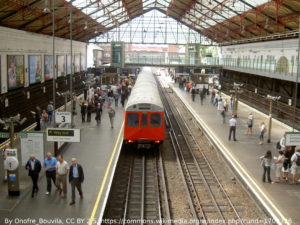
Welcome to LEED: The Energy Efficiency Podcast – episode 14, the podcast that brings you a mix of energy efficiency news, products and tips all year round. We’re interested in profiling people and products involved in promoting energy efficiency habits, products and information, so please do get in touch if you have something to contribute.
This week: the WELL health and wellbeing standard – how well does it work? Energy efficiency in public transport – is it going places? And the realities of recycling textiles.
But before we get on with our advertised features, last week website Carbon Brief reported on research looking at replacing hydropower with solar in the USA. The research suggested that America could replace all of its hydropower with solar power using just 13% of the space currently taken up by hydropower schemes. These large scale solar installations are known as USSE – utility scale solar energy.
Hydropower
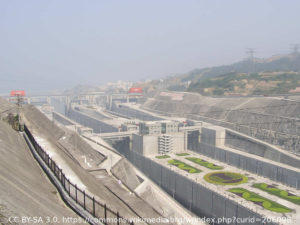
We looked at hydropower in ep 10 of the pod. The scale of hydropower stations and the disruption to natural watercourses inevitably have an impact on the surrounding area. In some cases, such as the Three Gorges Dam in China, the consequences can be quite devastating for all outcomes other than simply producing hydropower. To find an alternative that uses a fraction of the space is a big step forward for the environment.
Hydropower produces 6% of the USA’s power at the moment. One of its advantages is its ability to produce a surge of power when it’s needed. But in the USA many hydropower schemes are coming towards the end of their lifespan. Dams are being removed from service due to concern about the environmental impacts. In the last 30 years over 1000 dams have been dismantled in the USA. Improvements have been seen in migratory fish numbers in particular.
The research, undertaken by a team led by Dr John Waldman, an aquatic conservation biologist from the City University of New York, is described as a “thought experiment”. The US Army Corps of Engineers maintains a national inventory of dams, and the research team used this to work out how much space would be needed to produce the same amount of power via solar panels. As hydro power schemes vary in scale across the USA so the required area solar panels varies. In Florida, for example, four hydro dams cover 26,520 hectares. The power generated could be replaced by solar panels covering a similar size to New York’s central Park – that’s 341 hectares. 26,520 hectares of hydro or 341 hectares of solar. As the Americans say, do the math.
Costs
The research doesn’t look at the costs of installing solar, but they point out that reclaiming the land from hydro would allow installation of different forms of renewable energy generation. They describe a scenario with solar panels at the foot of a drained reservoir or perhaps putting in floating solar. Dams in valleys could see wind turbines on the ridge. Flowing water could be used for much less invasive forms of hydro power, specifically those that don’t block water courses.
It’s not all positive though. Many hydro reservoirs supply drinking water and assist flood control. Massive solar installations come with their own issues. Any new installation involves disturbing the ecosystem of an area, so research in the Proceedings of the National Academy of Sciences of the United States of America recommends installing solar in modular form in areas already inhabited by people – ie rooftops – and ensuring USSE are designed as efficiently as possible to minimise the land needed.
Installing solar within the built environment – eg on derilict or brownfield land – removes any conflict between using the land for food or power. Solar energy can be erratic, which would need to be taken into consideration, but hydro power isn’t always consistent either. They will be vulnerable to drought, which is a very real consideration in this climate crisis.
Across the developing world hydropower is becoming a popular alternative to burning fossil fuels. This reserch could encourage diverting some of that hydro capacity to solar, especially given that developing nations often have the climate to particularly benefit from solar.
WELL
In the last two episodes we’ve looked at BREEAM and LEED, the two most widely used sustainable building standards. There are many other schemes all with subtly differing aims, so this week we’ve chosen to examine WELL, a standard developed in the USA. WELL describes itself on its website as “the leading tool for advancing health and well-being in buildings globally”. This is clearly quite distinct from promoting sustainability, but there will be an overlap. A more detailed description from a PDF download from the Cundall site states:
“The WELL Building Standard® is a performance-based system for measuring, certifying, and monitoring features of the built environment that impact human health and wellbeing, through air, water, nourishment, light, fitness, comfort and mind.”
These last seven points are the WELL categories. I’ll list them again in case you missed them: Air, Water, Nourishment, Light, Fitness, Comfort and Mind.
Evidence
Many elements came together to formulate WELL standards, which were launched in October 2014. Scientific and medical research was integrated with evidence on environmental health and broader health outcomes, and behavioural insights and demographic risk factors to health to create a data set that could work with building design, construction and management best practice. Prior to launch, the WELL Building Standard was peer reviewed by scientists, medics and building practitioners. If you’d like the detailed detail on WELL’s seven principles there’s a link in the show notes to the relevant page of their website.
WELL is administered by the International WELL Building Institute. Its contributors include scientists, athletes and gardeners, all bringing their own take and context to building healthy buildings. The IWBI collaborates with Green Business Certification Inc to provide accreditation.
Working with BREEAM and LEED
WELL is intended to complement BREEAM and LEED. Imagine all the good that BREEAM and LEED achieve across every sustainability considerations and overlay it with a standard that prioritises the health of the people who use building. The cross-fertilisation between the two sets of priorities ensures that one isn’t promoted at the expense of the other or the environment more widely. The Cundall website gives the following example:
“What provides a healthier workplace for a person may come at negative impact to communities or the planet at large. For example, providing increased air quality and quantity could result in higher ventilation and air purification energy consumption which, if taken from the electricity grid, means higher greenhouse gas emissions. A solution to this problem is to use passive measures to reduce pollutants in the air such as green walls.”
Cundall describes itself as ‘multi-disciplinary engineering consultants’. Its London Office, newly built in 2016, was one of the first buildings in Europe registered for WELL. That went so well that Cundall took the same principles to its Hong Kong office, using its offices as what it describes as “a working lab”. Its London Office, One Carter Lane, won gold for its fit out, and also has a BREEAM excellent rating, showing that the two standards work well together.
BREEAM and WELL have collaborated to produce a PDF download of guidance for anyone looking to achieve both BREEAM and WELL certification. Some elements of WELL are already addressed in UK and EU building regs and the guidance looks at these in detail.
Examples
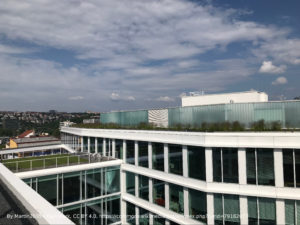
On its website WELL has a collection of certified projects to browse through. I’ve picked out a couple that were particularly interesting.
Visionary is a large office building in Prague, Czech Republic. It’s situated over multiple public transport facilities to encourage the sustainability and health benefits that come from using public transport, plus it facilitates electric car sharing. On the ground floor staff can access a doctor and a pharmacy. On the top floor is a running track and other sports facilities are provided. There’s a garden for staff to spend time in. On top of its WELL Gold certificate, it also has a LEED platinum rating.
Mirvac HQ in New South Wales, Australia, is a new building for a property company that itself designs environmental and socially sustainable buildings. Its new building is the first gold WELL certified interior space in Australia. Indoor air quality is closely monitored, and enhanced by profuse planting through the building, giving all staff access to nature. Staff can go to yoga and pilates sessions, and eat in the cafe which prioritises healthy options and clear labelling. That might not sound like much, but as the mother of a coeliac I can tell you that clear food labelling is a blessing. It’s one little area that doesn’t need to be stressful.
What’s interesting about this building is how it controls heat into the building, in Australia’s often scorching temperatures. It’s built with a closed cavity facade and a timber blind system. If you haven’t come across a closed cavity facade before, here’s how it works, from the Josef Gartner site:
“Closed Cavity Façade is a double skin façade where the cavity between the inner and the outer skin is completely sealed. Dry and clean air is constantly fed into the façade cavity in order to prevent the formation of condensation on the glazing. Outside conditions are constantly monitored electronically and the quantity of dry air is adjusted accordingly. As a result, energy consumption is reduced to a minimum.”
The timber blind system automatically adjusts to control light and heat radiation. As well as its WELL certification, the Mirvac HQ has achieved a 5 star Green Star rating, Green Star being Australia’s own sustainable building standard.
Co-operation
Encouragingly, while researching this article the overwhelming attitude I found was that this health-focussed standard should work WITH sustainable buildings standard. There was no suggestion that one trumped the other, or got in its way. Architects seem to be very aware that combining both health and sustainability standards is by far the best approach.
It’s clear that many measures incorporated in BREEAM- and LEED-certified buildings will sooner or later be mandatory. The same applies to WELL. Any developer implementing these standards is stealing a march on competitors. As soon as you start looking at the detail of WELL it’s clear that most of its elements are no-brainers. Lighting is a good example.
WELL stipulates lighting that minimises disruption to the body’s circadian rythmns, supports good sleep quality and provides good clear lighting for the task it’s illuminating. This last is to avoid eye strain and headaches. Interruption to circadian rythmns can negatively affect alertness, digestion and sleep, which in turn can increase the likelihood of someone developing heart disease and diabetes, among other unpleasant conditions. WELL emphasises the impact lighting can make on people who spend most of their day indoors – that’s going to be vast numbers of people who work in an office – and that it’s vital to get this right.
A healthier environment increases productivity, reduces absenteeism, and makes a workplace more attractive to potential recruits. We saw this with BREEAM and LEED too. Interestingly, WELL Certification occurs after a building has been occupied for a period of time and post occupancy testing carried out to demonstrate performance in operation.
Standalone
Effectively what WELL is doing is taking the occupant health and wellbeing of BREEAM and LEED, shining a very bright spotlight on it and scaling it up to be a standalone discipline. According to the Green Build Consult website, occupant health is now seen to be a major driving factor in new builds.
An article on Green Build Consult looks at the risk of overheating and reduced oxygen in well-insulated buildings with tight control on ventilation. In theory this shouldn’t happen if systems work properly within well-designed buildings, but it seems it does. Interestingly the article points out that existing heat thresholds tend to consider extreme heat events where everyone’s flaking out and there’s no grey area, rather than a consistent gentle warmer-than-comfortable high temperature that though less dramatic can lead to heat-related illness and even death. It’s considerations such as these that has increased pressure on governments to combine occupant comfort with energy efficiency in buildings policy.
Cost
On its website, WELL acknowledges that achieving certification can be expensive as it’s linked to floor area. The bigger the building, the more accreditation will cost. It’s estimated that additional construction costs is between 1 and 3%. WELL offers a solution to this: incorporate WELL requirements into the design without going for accreditation, then leave the occupant to go for accreditation when the fit out the building. As the site says, those who benefit also pay. The lovely aspect of this is that even if occupants don’t go for WELL accreditation when they fit out the building, they will still benefit from a building constructed to WELL principles, which is much better than nothing.
Textile Recycling

We’re talking about textile recycling this week. Textile recycling can be a real pain. Some local authorities collect it kerbside, but more don’t. 1/3 of local authorities in London collect textiles. Herefordshire council doesn’t. Four fast-growing children have grown up under our roof, and that amounts to a lot of outgrown clothes and items stained or torn beyond use.
Reuse
I’ve cut up countless torn and outgrown pyjamas to use as handkerchiefs, dismembered old sweatshirts for kitchen clothes, and endless disintegrating pillow cases and bottom sheets are stored away for grotty cleaning jobs, floor sheets if we’re painting, that sort of thing. I’ve even been known to put torn bits of cotton clothing into the compost. There’s only so much of this stuff you can store. I should add I do try to mend clothes but I’m not very good at it. I did patch our son’s trousers though, while he was too young to care about my wobbly sewing.
So you’re talking here about textiles that can’t be given to a second hand shop or passed on to someone with younger kids?
They’re easy to offload. We’ve taken a fair few armfuls of them too. What I’m talking about today are textiles of all sorts that are past meaningful use. They need to be recycled so that their raw materials can be reused.
Used for what? More clothes?
I didn’t know what they might be used for til I watched a video on the website FireFightersCharity.org.uk. They have clothes and textiles collection bins across the England, Scotland and Wales, and a video on their site shows you what happens to the textiles donated. They sell unwearable textiles to industry and they can end up being used for, for example, car upholstery. That had never occured to me. So far they’ve raised over 3 million for their charity which supports fire fighters when they need it. I think that’s an awesome cause. They have a map on their site so you can find out where your nearest bin is.
I’m guessing most textiles don’t go into a Firefighters Charity bin?
Sadly not. I should say that many other charities also operate similar schemes. According to Hubbub, an initiative promoting healthier and greener lifestyles across a range of areas including fashion, 1/3 of discarded clothing in the UK just gets tossed in the bin. The website wiseuptowaste.org.uk says that if all clothing dumped in landfill had instead been sold through charity shops it could have raised 140 million. By the way Hubbub points out that knackered old textiles can be used for chair padding, cleaning cloths and industrial blankets, as well as car upholstery. Hubbub also points out ways to help clothes last for longer.
Collection
Some items have just had their chips and need to be recycled. Other than charity bins, some councils offer textile collection and so do some charities – if you have a stash of stuff but can’t get to the charity shop under your own steam give them a call and see if they will come and get it.
So it looks like in the UK that although you have to recycle textiles separately from your other household recycling, it’s fairly straightforward. Charity shop what you can, stick the rest in a textile recycling bin even if it’s grotty. That’s not the end of it though, is it? Recycling must use a fair bit of energy.
Yes it does, but that’s if textiles are recycled. We’ve all heard that disposable fashion is unsustainable but increasing, and around the world vast amounts end up in landfill. Australia in particular has a shockingly high level of hardly used clothing going into landfill.
I suppose you have to think about what that clothing is made of.
Yes – much sports wear is made of PET, that’s the same stuff plastic bottles are made of, and packaging. 2/3 of it goes into clothing. If that clothing goes into landfill it dwarfs all our efforts to reduce and recycle plastic bottles. Even donating clothes and textiles isn’t a magic bullet as the market is now flooded and becoming unprofitable. Some recycling companies have even gone bankrupt. Horrifyingly, according to a Guardian article, 87% of unwanted textiles go to landfill.
What happens to the rest?

12% goes for shredding and reuse as fibre, insulation or rags, and just 1%, one measly %, is chemically recycled back to reusable raw materials. There’s a massive opportunity to make something out of proper textile recycling, and some developments are emerging such as chemical sorting. This would allow items fibres to be accurately diverted for reuse. This takes the pressure off raw materials and landfill. It would allow proper valuation of the fibres in a way that doesn’t happen now. Manufacturers need to buy into it too. Nike includes recycled materials in its products and H&M incorporates 100% regenerated nylon fibre in a special collection.
You mentioned before the energy involved in recycling textiles. Some processes are as damaging as producing the raw materials in the first place but this is a minority. Research published in Science Direct in May last year found that overall it’s beneficial to recycle textiles, though reuse is preferable. If anyone wants to read that research the link is in the shownotes.
In the UK we donate a lot of old clothes to charity, but still buy a lot and chuck a lot away. According to a government select comittee publication 300,000 tonnes of clothing is binned here every year. 20% goes to landfill, 80% is incinerated. The document suggests that a 1p levy on clothes for sale in the UK would raise about £35 million to invest in clothing collection points, sorting and recycling facilities.
I’ve looked at a publication from the Environmental Audit Select Comittee. It’s surprisingly readable. It promotes arguments in favour of teaching people mending skills and developing a mindset that makes buying new clothes a considered process. It quotes Professor Dilys Williams of the Centre for Sustainable Fashion at the London College of Fashion who wants practical mending skills across a range of materials included in the school curriculum.
The document points out that many people don’t feel confident to consider mending a garment. I’d catch up a hem, sew on a button on so on and apply a basic patch, but even at my age I still go to my mum if it’s more complicated than that. Members of the select comittee want a new approach to dealing with what’s termed ‘post-consumer fashion’.
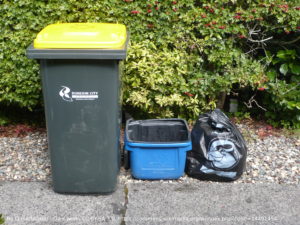
The first suggestion is kerbside recycling. That would normalise putting out textile waste alongside your tin cans and cereal boxes and make textile recycling something you don’t have to put conscious thought into.
Interestingly the select committee also called for Regional Textile Sorting Centres to be created. They would grade items according to their resale potential. They also want anyone to have easy access to what’s being discarded, so that people can reuse and upcycle it.
Pre-consumer waste
One contributor to the select committee, designer Phoebe English, raised the issue of pre-consumer waste, the bits left on a piece of material after cutting out the shapes you need. It’s a big problem in China and India. In New York business are legally required to separate and repurpose all textile waste down to the smallest scrap of fabric if textiles make up more than 10% of their waste in any month.
That sounds a bit complex to administer.
That’s what I thought, but it shows an awareness of the problem at least. It’s not just a nice idea though. Businesses and initiatives have sprung up to collect this excess fabric. One, FABSCRAP, prepares the fabric to be reused by other brands, including Marc Jacobs and Esprit.
Aren’t some companies taking back clothes?
Yes. It’s called schwopping and it’s been quite successful. M&S have beeg doing it for a little while and Zara and H&M have plans to start. People depositing clothes usually get a voucher to spend in-store so you can see the appeal. Again, companies taking proactive steps in this area will be ahead of the game if it become mandatory to take items back at end of life, like electronics firms have to. Placing more responsibility on producers incentivises them to produce less waste in the first place.
France has a policy along these lines. Collection rates have increased by over 50% and over 90% of that is reused or recycled. They’ve created sorting centres with 1400 full time jobs, and half of those jobs have gone to people having trouble finding employment.
It sounds great, but Dr Mark Sumner of the University of Leeds feels it’s a tax on clothing manufacturers and he wants the government to do more more towards kerbside recycling and providing the recycling infrastructure.
Parker Lane Group, a textile recycling company, feel a system like the French one would have benefits. Whatever happens, textiles recycling is part of the government’s plan to eliminate avoidable waste by 2050. In the meantime, I’ll keep cutting up sheets for dusters.
Energy efficiency in public transport

Set against private car use, public transport is inherently energy efficient. One train, bus or tram can transport many more people than a car. However, that public transport could in many cases itself be a great deal more energy efficient than it is.
Transport became the UK’s most carbon-intense sector in 2016, overtaking power generation. This has prompted local councils to strive for ambitious sustainable transport strategies. One relatively straightforward step is to replace fossil fuel vehicles with electric-powered alternatives.
Electric buses
In Leeds electric double decker buses are being trialled, following a successful pilot in York. Each Metrodecker EV carries 99 passengers and travels 150 miles on an overnight charge. This bus runs on a park and ride route. West Yorkshire Combined Authority is working with bus operators to make these changes. The manufacturer of the buses, Optare, is based in Leeds and produces its buses in Yorkshire.
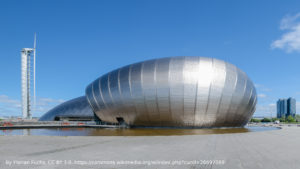
Retrofit
The Scottish government is funding the BEAR scheme – Bus Emissions Abatement Retrofit. This keeps existing fleet in use, fitted with technology that reduces emissions. Buses fitted with this technology will meet the requirement of Low Emissions Zones by bringing down lovels of nitrogen dioxide and particulate matter. Nitrogen dioxide emissions are typically reduced by 95% after undergoing a BEAR retrofit.
One bus company, McGill’s, will find 30% of its otherwise servicable fleet unable to enter Glasgow’s low emissions zone by 2023, but BEAR funding means these buses can be retrofitted and keep on ferrying people around on a tiny fraction of the previous emissions.
It won’t surprise you to hear that the Netherlands is well ahead with providing its citizens with clean public transport. Since 2017 all electric passenger trains use green energy. There are various high standards set for buses, and the government is looking into the possibilities for hydrogen-powered trains. It has agreement with each type of public transport for energy efficiency improvements year on year.

Hydrogen
Hydrogen trains are a possibility here in the UK too. At the moment most trains are powered by either electricity or diesel. The government wants to phase out diesel trains by 2040, another 20 years away.
The options are to electrify the whole network, provide batteries or hydrogen storage, or some combination of both. The answer isn’t straightforward. Diesel trains can be built to high levels of energy efficiency. The technology is improving all the time, and the infrastructure is already there and proven. Electrifying big chunks of the rail network would be a massive and expensive project. Some Victorian rail bridges would be an obstacle to the catenary wires which are part of the electrical transmission network on a train. Should we skip electrification and go straight to a hydrogen storage system and embrace the future?

At the moment just 42% of the UK rail network is electrified, and ASLEF, the train drivers’ union, supports electrifying the rest. they argue persuasively on their site that electric beats diesel on many considerations. As regards the cost of electrification, ASLEF puts this down to each proposed electrification project being considered in isolation and so racking up costs each time that would be wiped out of a national rolling programme was implemented. ASLEF states that for long-distance or freight trains hydrogen or battery power wouldn’t be enough, and that electrification is the only option.
In June this year the Hydroflex hydrogen powered train was showcased in the West Midlands. The train was developed by train building company Porterbrook in partnership with Birmingham University’s Centre for Railway Research. The UK is looking to be only the second country in the world to start running hydrogen trains. A small handful currently operate in Germany, although Rhein-Main transport authority has ordered 27, and Romania and France want to place orders.
Victorian rail network
We have to develop trains to work specifically with Britain’s Victorian rail network, which uses shorter trains. Trains have to be developed that store the hydrogen infrastructure above or underneath the carriages, but still leave room to go through tunnels. The Hydroflex, as a showcase train, stored the infrastructre where passengers would sit.
Using hydrogen to replace diesel is cheaper than electrifying track on the face of it, but investment would be needed to generate and store hydrogen. Perhaps the answer is half and half, with hydrogen powering sections of railway that have low bridges and tunnels – remember those catenary wires – and electricity being used the rest of the time. This would reduce the mileage of electrification needed.
Generating hydrogen
Although hydrogen breaks down into harmless components, generating it from methane creates CO2. This needs to be captured and put to good use to ensure that creating hydrogen fuel cells doesn’t create as many problems as it solves. There is another way of producing hydrogen, by passing an electric current through water. Using renewable electricity to create the current would make hydrogen renewable, but to be economic plants creating hydrogen in this way would need to run more or less all the time. If renewables weren’t available they would then draw expensive and non-renewable power from the grid. Fortunately there is a third way: thermochemical production, where sulphur and iodine react with water in the presence of heat. This should become economical in the next decade as ‘generation IV’ power plants – high temperature, small modular reactors, are developed. They aren’t being developed in the UK yet but are in countries including China and Canada.
Hydrogen fuel is a popular area for research, so generation is likely to become cleaner and less expensive. When it can be produced at scale it could replace natural gas in our homes, leading to an economy of scale that make it a simple choice to power trains.
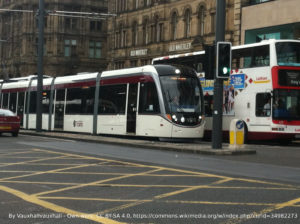
Many cities around the world run a tram network. In the UK trams aren’t widely used any more, although once they were a standard form of travel. By the mid-1960s every city except Blackpool had ripped up its tramlines in favour of the car. From the mid-80s trams crept back, initially in Tyne & Wear, then Docklands and so on.
Increasing journey numbers
According to government figures though tram and light rail journeys in the UK are increasing slowly, up by 44% in the last decade. Just now almost half of those journeys are on the Docklands Light Railway in London. Government figures show good rates of satisfaction, no doubt linked to pretty good punctuality. There’s a government PDF that we’ll link to if you’re interested in a breakdown of a comprehensive data set.
British cities running trams include Edinburgh, Sheffield, Manchester and Birmingham. Plans are in place for trams in Cardiff and a campaign is underway to bring them back to the city of Bath. Trams need an infrustructure that buses just don’t. This makes them feasible in a city or other densely populated area. Trams create no pollution in operation, a dream situation in an environment with lots of pedestrians around. However a constant and reliable electricity supply is needed, so going 100% green will present its challenges. Having said that, trams are lightweight vehicles, so use less energy to move around than another vehicle of the same size or capacity.
Manchester runs its trams on 100% renewable energy. On its website, Transport for Greater Manchester reports that 70% of the energy comes from wind and solar, with the rest from waste and hydro power, so it can be done. Interestingly, the site also points out that Manchester’s trams have steel wheels rather than rubber tyres. When the wheel is worn out it’s recycled, so full marks to Manchester for taking a holistic approach to providing energy efficient public transport.
Helsinki in Finland powers its trams by water and wind power and combines with that with running the most energy efficient vehicles. It’s introducing a driver advisory service in stages, which helps drivers save energy. If a driver can see they are running perfectly to time or are ahead of themselves they can drive more slowly and use less energy. It also helps to reduce unnecessary braking. Drivers in Helsinki weren’t sure about the system at first but are now seeing the benefits for themselves and welcome it.
There’s a link in the show notes to an article on the website Tramways and Urban Transit which goes into much technical detail about how electricity is and can be delivered to networks, and related initiatives around the world.
Underground trains

Lastly a quick look at the energy efficiency of underground train networks. We saw last week how essentially ‘waste’ heat generated by tube trains can be used to heat homes and businesses, but how efficient are the trains to operate? TfL, which operates London Underground, has big plans. TfL uses more electricity than anything else in London, with both underground and overground trains eating up a massive chunk of that. It needs to be onboard if Sadiq Khan’s plan of a carbon neutral London by 2050 is to be a reality. Tube trains have their part to play.
Braking
If you travel on the Victoria Line you may have noticed that the track rises very slowly on the approach to each stop, then falls away. This helps trains to slow down and reduce the need for braking. Braking creates lost heat, which is one reason the underground gets so hot. That system isn’t new though. It was put in place when the line was built in the 60s. Newer trains also use regenerative braking, which captures lost energy and pipes it back to the train. That has a knock-on of reducing wear-and-tear on brake pads and it creates less dust, which leaves the tunnels cleaner. This technology is being introduced as old trains are phased out. Tfl is also looking at where trains can coast into stations, to reduce energy use in braking even further.
TfL wants to generate its own power. It plans to fit solar panels trackside and on top of its buildings. Given that the land can’t really be used for anything else this is a fantastic opportunity with immense potential. Research conducted by Imperial College and published under the fabulous name Riding Sunbeams, suggests TfL could meet 6% of its energy needs this way. Professor Tim Green of the Energy Futures Lab at Imperial College London points out that TfL has a choice about where it buys its energy from, and could go greener through the simple measure of buying from a carbon neutral supplier. Last year TfL began a process to make agreements directly with suppliers who generate green energy, as cutting out the middle man would cut costs significantly. Here’s hoping these cuts are reflected in ticket prices.
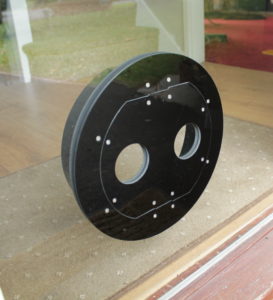
And what have we been up to? We’ve now sold out of Petflaps, and have started taking reservations for the next batch. We haven’t done this before so are trialling it. Email us at info@ecoflap.co.uk to reserve one of the next batch. If you read Real People magazine look out for us in next week’s issue. Journalist Jane Common has written a small piece on us which we’re agog to read.
Thank you for listening to episode 14 of the Energy Efficiency Podcast. Until next time you can find us on both Twitter and Instagram as Ecoflap, and on Twitter we also tweet as The Petflap. In next week’s episode we’ll look at: wood fibre as an insulation material, energy efficiency in the distilling business, and getting winter ready.
Music credit: “Werq” Kevin MacLeod (incompetech.com)
Licensed under Creative Commons: By Attribution 3.0 License
http://creativecommons.org/licenses/by/3.0/
